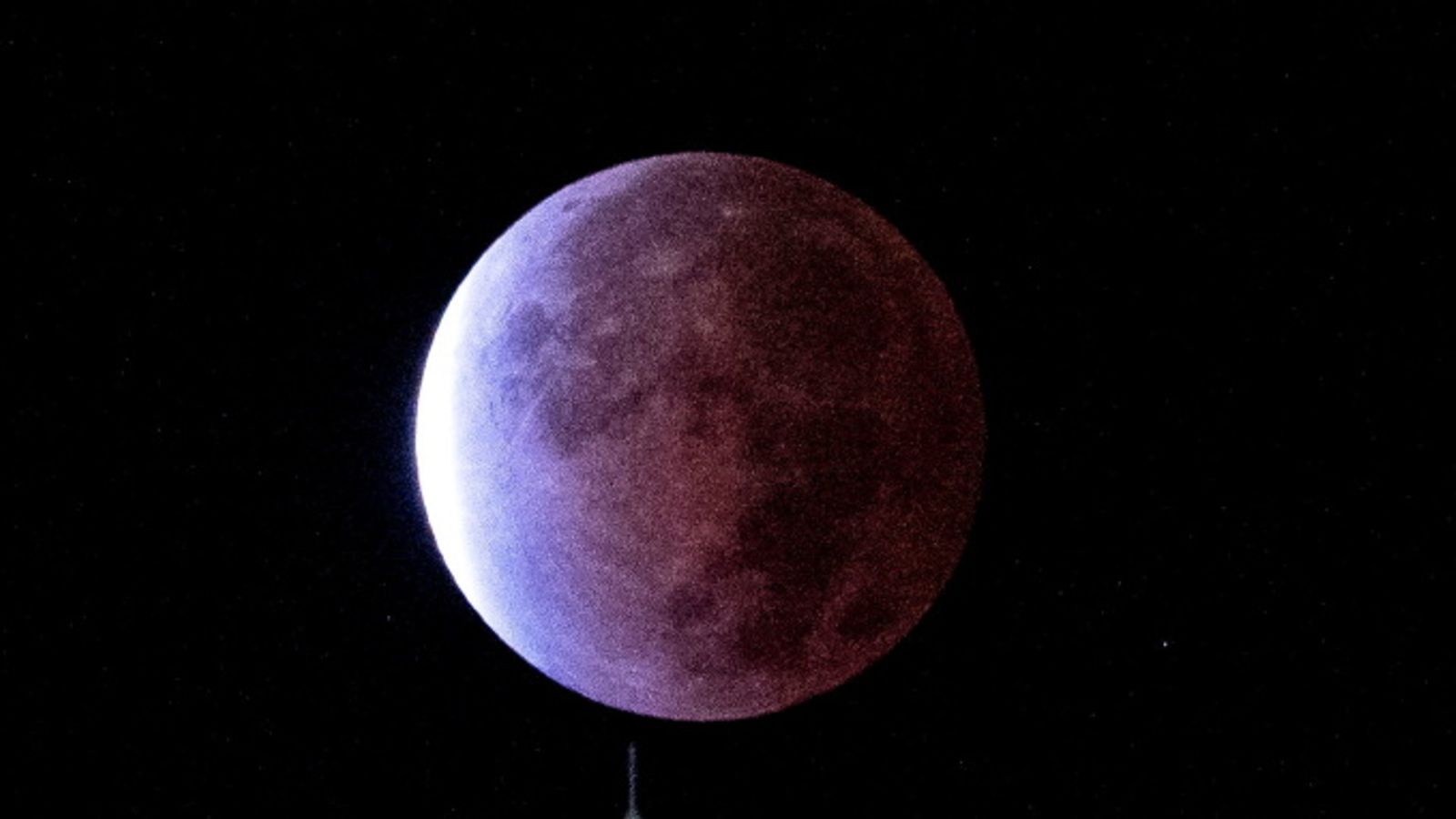Stargazers in eastern Asia, Australia, the Pacific and North America were treated to a rare “beaver blood moon” on Tuesday in the last total lunar eclipse for three years.
Total lunar eclipses usually occur every year and half, but sky watchers will have to wait till 14 March 2025 to see one again.
A blood moon happens when the Earth’s orbit positions it in between the moon and sun, blocking the sunlight and dimming the lunar orb to a reddish hue.
A beaver moon is a moniker for November’s full moon, originating from Alogonquian – a Native American language.
The six-hour spectacle started in the US at 3am Eastern time, before reaching a peak around three hours later
Why does the moon appear red?
When the Moon is situated directly behind the Earth, the sunlight must travel through our planet’s atmosphere on the way to the moon, which makes the light appear an unusual blood-like colour.
In pictures: Partial solar eclipse as it happened
Watch live as UK experiences partial solar eclipse
Partial eclipse to be visible from the UK on Tuesday – how and when to see solar event
The intensity of the colour is dependent on the conditions of the atmosphere, such as air pollution, dust storms, wildfire smoke and volcanic ash.
This is the second blood moon this year, after one in mid-May.







